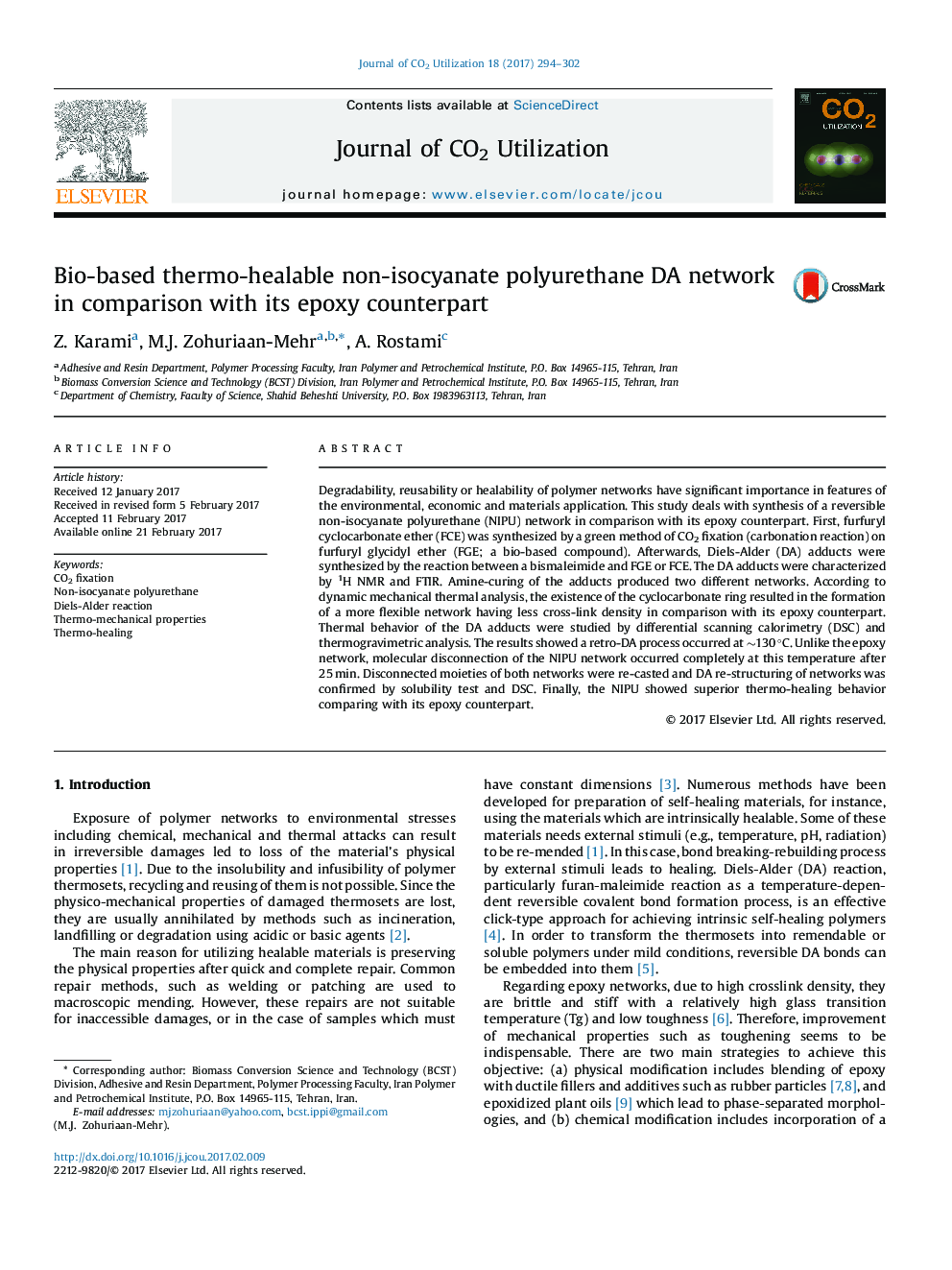| Article ID | Journal | Published Year | Pages | File Type |
|---|---|---|---|---|
| 6456246 | Journal of CO2 Utilization | 2017 | 9 Pages |
â¢A furfuryl cyclocarbonate ether based NIPU network was prepared, characterized and compared with its epoxy counterpart.â¢Thermal and mechanical properties of the networks were investigated.â¢Thermo-healability of the NIPU was superior than that of the epoxy counterpart.â¢The NIPU solubility at retro-DA conditions makes it a good candidate for reusability.
Degradability, reusability or healability of polymer networks have significant importance in features of the environmental, economic and materials application. This study deals with synthesis of a reversible non-isocyanate polyurethane (NIPU) network in comparison with its epoxy counterpart. First, furfuryl cyclocarbonate ether (FCE) was synthesized by a green method of CO2 fixation (carbonation reaction) on furfuryl glycidyl ether (FGE; a bio-based compound). Afterwards, Diels-Alder (DA) adducts were synthesized by the reaction between a bismaleimide and FGE or FCE. The DA adducts were characterized by 1H NMR and FTIR. Amine-curing of the adducts produced two different networks. According to dynamic mechanical thermal analysis, the existence of the cyclocarbonate ring resulted in the formation of a more flexible network having less cross-link density in comparison with its epoxy counterpart. Thermal behavior of the DA adducts were studied by differential scanning calorimetry (DSC) and thermogravimetric analysis. The results showed a retro-DA process occurred at â¼130 °C. Unlike the epoxy network, molecular disconnection of the NIPU network occurred completely at this temperature after 25 min. Disconnected moieties of both networks were re-casted and DA re-structuring of networks was confirmed by solubility test and DSC. Finally, the NIPU showed superior thermo-healing behavior comparing with its epoxy counterpart.
Graphical abstractDownload high-res image (157KB)Download full-size image
